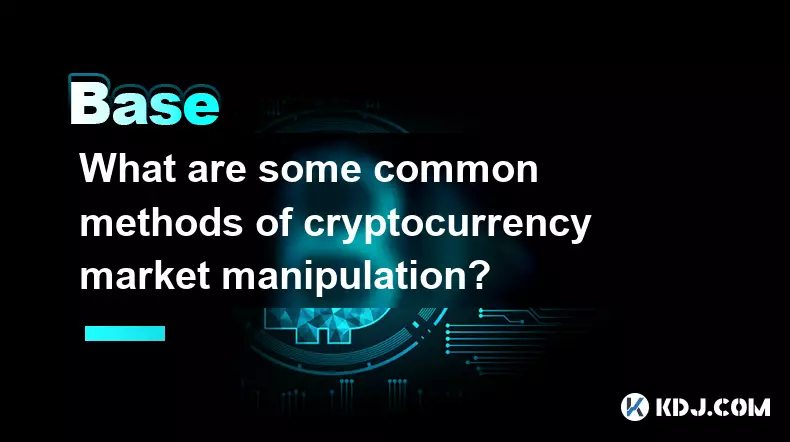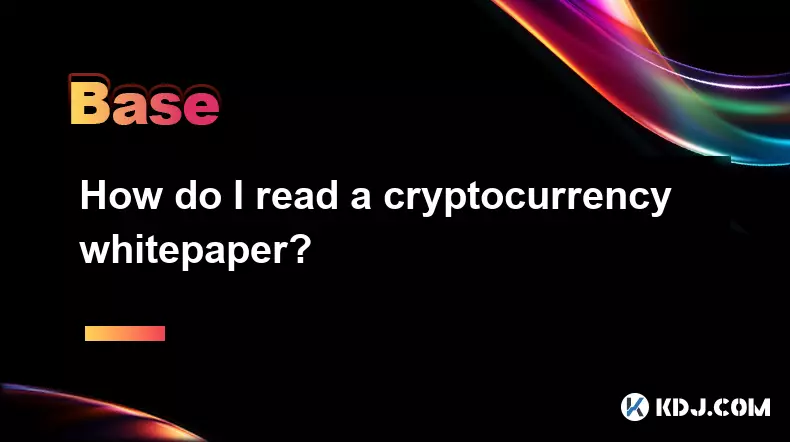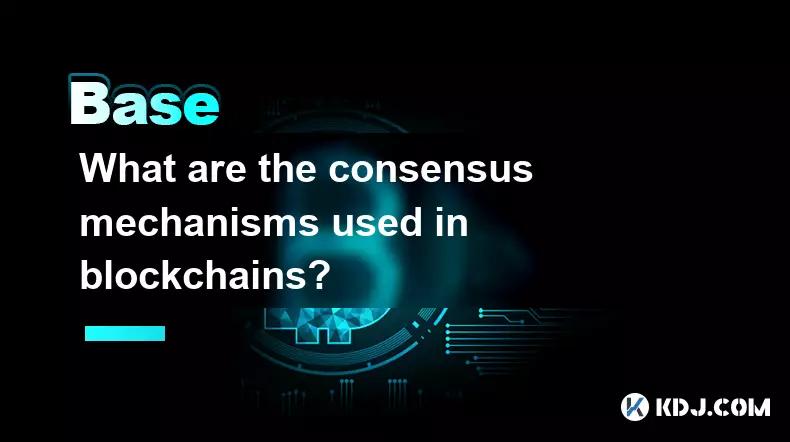-
 bitcoin
bitcoin $109667.069529 USD
-3.03% -
 ethereum
ethereum $3936.685804 USD
-4.07% -
 tether
tether $1.000493 USD
0.01% -
 xrp
xrp $2.771823 USD
-4.74% -
 bnb
bnb $957.805027 USD
-5.34% -
 solana
solana $196.735100 USD
-6.68% -
 usd-coin
usd-coin $0.999727 USD
-0.01% -
 dogecoin
dogecoin $0.227355 USD
-5.12% -
 tron
tron $0.335205 USD
-0.81% -
 cardano
cardano $0.779256 USD
-3.59% -
 ethena-usde
ethena-usde $0.999900 USD
-0.06% -
 hyperliquid
hyperliquid $42.492095 USD
-6.61% -
 chainlink
chainlink $20.501853 USD
-4.34% -
 avalanche
avalanche $28.952606 USD
-11.21% -
 stellar
stellar $0.356038 USD
-3.93%
How to identify a cryptocurrency scam?
Scammers often promise unrealistic returns, pressure quick decisions, and hide team details to lure victims into cryptocurrency frauds.
Jun 15, 2025 at 09:29 am

What are the common signs of a cryptocurrency scam?
Identifying a cryptocurrency scam begins with understanding the typical red flags associated with fraudulent schemes. Scammers often promise unrealistic returns, such as guaranteed profits or exponential growth in a short period. These claims should raise immediate suspicion, as legitimate investments carry risk and uncertainty.
Another common sign is pressure to act quickly. Scammers may use tactics like limited-time offers or fear-based messaging to push victims into making hasty decisions without proper research. Additionally, lack of transparency regarding team members, technology, or business model is a major warning sign. Legitimate projects typically provide detailed whitepapers, team bios, and roadmap updates.
Unregulated platforms or wallets that ask for excessive personal information can also be indicators of scams. If an exchange or wallet service operates without clear regulatory oversight, it could be hiding malicious intent. Always verify if the platform is registered with relevant financial authorities.
Lastly, unsolicited communications through social media, email, or messaging apps offering investment opportunities are often used by scammers. These messages frequently contain phishing links or lead to fake websites designed to steal funds or personal data.
How do fake Initial Coin Offerings (ICOs) operate?
Fake ICOs are among the most prevalent types of cryptocurrency scams. They mimic legitimate token sales but are designed solely to collect investor funds before disappearing. One key indicator is a poorly written or plagiarized whitepaper. Authentic projects invest heavily in comprehensive documentation, while scams often copy content from other sources or provide vague technical details.
Anonymous or unverifiable team members are another hallmark of fraudulent ICOs. Real projects usually feature experienced professionals with public profiles on professional networks like LinkedIn. Fake ICOs may use stock photos or fabricated identities to create false credibility.
Scammers also tend to offer unusually high bonuses for early investors, creating a sense of urgency to participate quickly. In addition, they may lack a working product or prototype, relying only on conceptual ideas or promotional videos.
The absence of third-party audits or verifiable smart contracts further confirms the likelihood of fraud. Legitimate blockchain projects often undergo code audits by reputable firms and publish the results publicly.
How to spot phishing attempts in the crypto space?
Phishing remains a significant threat within the cryptocurrency ecosystem. Scammers impersonate trusted services—such as exchanges, wallet providers, or even customer support teams—to trick users into revealing private keys or login credentials.
One of the most common techniques involves fake login pages that closely resemble those of real platforms. These pages often appear through deceptive URLs or misleading ads. Users should always double-check website addresses and ensure they're using official links.
Email phishing is another tactic where attackers send messages claiming urgent account issues or suspicious activity. These emails often contain links to counterfeit sites or attachments containing malware. Genuine companies will never ask for sensitive information via email.
Phishing can also occur through social engineering on messaging apps or forums. Fraudsters may pose as support agents or community moderators to gain trust and extract confidential data. Always verify the identity of anyone requesting access to your account or wallet.
Using two-factor authentication (2FA), especially hardware-based solutions like YubiKey, significantly reduces the risk of falling victim to phishing attacks. It adds an extra layer of security beyond passwords.
Red flags in cryptocurrency trading platforms
When evaluating a cryptocurrency exchange or trading platform, several red flags indicate potential scams. Lack of clear fee structures or hidden charges can signal dishonest practices. Reputable exchanges publish transparent fee schedules and terms of service.
A suspicious domain name or frequent URL changes should also trigger caution. Scammers may register domains similar to well-known exchanges to confuse users. Always check SSL certificates and ensure the site uses HTTPS encryption.
If a platform promises exclusive trading algorithms or insider access to market-moving information, this is likely a scam. No system can guarantee consistent profits in the volatile crypto market.
Another concern is restricted withdrawals or delayed transaction processing. Some fraudulent exchanges allow deposits but make it difficult or impossible to withdraw funds, citing arbitrary compliance reasons.
Additionally, poor customer support responsiveness or lack of multiple contact channels can be indicative of a disreputable operation. Reliable exchanges offer live chat, email support, and sometimes phone assistance.
How to verify the legitimacy of a crypto project?
Verifying the authenticity of a cryptocurrency project requires due diligence. Start by researching the development team behind the project. Publicly identifiable developers with proven track records are a positive sign. Use professional networks and past contributions to blockchain ecosystems to confirm their legitimacy.
Examine the project's whitepaper thoroughly. A credible whitepaper includes technical specifications, use cases, tokenomics, and a realistic roadmap. Avoid projects that present vague goals or fail to explain how the technology works.
Check for active community engagement across forums, social media, and developer repositories. Projects with regular updates, GitHub activity, and responsive communication channels demonstrate ongoing commitment.
Third-party endorsements from established figures or organizations in the crypto space can add credibility. However, be cautious of paid promotions or fake testimonials that may mislead new investors.
Finally, look for regulatory compliance and legal disclosures. Legitimate projects often outline their adherence to jurisdictional laws and may seek licensing where applicable.
Frequently Asked Questions (FAQ)
Q: Can I recover funds lost to a crypto scam?Recovering stolen cryptocurrency is extremely difficult due to the irreversible nature of blockchain transactions. However, you can report the incident to local authorities and cybercrime units. Some specialized recovery services exist, but success varies depending on the case.
Q: Are all anonymous crypto projects scams?Not necessarily. While anonymity raises concerns, some privacy-focused cryptocurrencies maintain legitimacy through transparent development and strong community backing. Always assess the project’s purpose, codebase, and governance model before judging its credibility.
Q: Is it safe to invest in a project without a whitepaper?Investing in a project without a whitepaper is highly risky. The whitepaper serves as a foundational document explaining the technology, objectives, and economic model. Lack of one indicates either negligence or intentional obfuscation.
Q: Should I trust influencers promoting crypto projects?Influencers often promote projects for compensation, not necessarily because they believe in them. Always conduct independent research and avoid investing based solely on celebrity endorsements or social media hype.
Disclaimer:info@kdj.com
The information provided is not trading advice. kdj.com does not assume any responsibility for any investments made based on the information provided in this article. Cryptocurrencies are highly volatile and it is highly recommended that you invest with caution after thorough research!
If you believe that the content used on this website infringes your copyright, please contact us immediately (info@kdj.com) and we will delete it promptly.
- AlphaTON's Bold Bet: Toncoin, Balance Sheets, and the Future of Digital Treasuries
- 2025-09-27 04:45:15
- Crypto Kidnapping in Minnesota: A New York Minute Breakdown of the $8 Million Heist
- 2025-09-27 04:25:14
- Avalanche, RUVI, and the Altcoin Rush: What's Fueling the Fire?
- 2025-09-27 04:25:14
- Ripple's RLUSD Takes Center Stage: Bybit Listing and Derivatives Market Potential
- 2025-09-27 05:05:12
- Bitcoin, Ethereum, and ETF Outflows: What's Shakin' in Crypto?
- 2025-09-27 05:25:13
- Worldcoin's WLD: Support Rebound or Further Decline? A New Yorker's Take
- 2025-09-27 05:05:12
Related knowledge

What are some common methods of cryptocurrency market manipulation?
Sep 27,2025 at 02:55am
Wash Trading and Its Impact on Market Perception1. Wash trading involves an individual or entity simultaneously buying and selling the same cryptocurr...

How do I read a cryptocurrency whitepaper?
Sep 27,2025 at 05:54am
Understanding the Structure of a Cryptocurrency Whitepaper1. Begin by identifying the executive summary, which outlines the project’s core vision and ...

Can I recover lost cryptocurrency?
Sep 25,2025 at 08:18am
Understanding the Nature of Cryptocurrency Loss1. Cryptocurrency operates on decentralized networks, meaning there is no central authority to reverse ...

How can I earn passive income from cryptocurrency?
Sep 23,2025 at 10:18am
Staking Cryptocurrencies for Regular Returns1. Many blockchain networks operate on a proof-of-stake (PoS) consensus mechanism, allowing users to earn ...

What are gas fees in cryptocurrency transactions?
Sep 26,2025 at 02:00am
Understanding Gas Fees in Blockchain Transactions1. Gas fees are payments made by users to compensate for the computing energy required to process and...

What are the consensus mechanisms used in blockchains?
Sep 24,2025 at 10:00am
Proof of Work and Its Role in Blockchain Security1. Proof of Work (PoW) is one of the earliest consensus mechanisms, first implemented by Bitcoin. Min...

What are some common methods of cryptocurrency market manipulation?
Sep 27,2025 at 02:55am
Wash Trading and Its Impact on Market Perception1. Wash trading involves an individual or entity simultaneously buying and selling the same cryptocurr...

How do I read a cryptocurrency whitepaper?
Sep 27,2025 at 05:54am
Understanding the Structure of a Cryptocurrency Whitepaper1. Begin by identifying the executive summary, which outlines the project’s core vision and ...

Can I recover lost cryptocurrency?
Sep 25,2025 at 08:18am
Understanding the Nature of Cryptocurrency Loss1. Cryptocurrency operates on decentralized networks, meaning there is no central authority to reverse ...

How can I earn passive income from cryptocurrency?
Sep 23,2025 at 10:18am
Staking Cryptocurrencies for Regular Returns1. Many blockchain networks operate on a proof-of-stake (PoS) consensus mechanism, allowing users to earn ...

What are gas fees in cryptocurrency transactions?
Sep 26,2025 at 02:00am
Understanding Gas Fees in Blockchain Transactions1. Gas fees are payments made by users to compensate for the computing energy required to process and...

What are the consensus mechanisms used in blockchains?
Sep 24,2025 at 10:00am
Proof of Work and Its Role in Blockchain Security1. Proof of Work (PoW) is one of the earliest consensus mechanisms, first implemented by Bitcoin. Min...
See all articles










































































